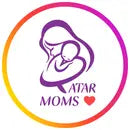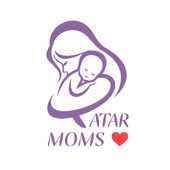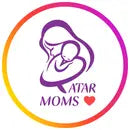A newborn’s rash is a normal condition that will happen sooner or later, so there is no need to worry when you notice any abrasions or redness on the skin. To learn about the types of newborn rashes, their causes, and methods of treatment, continue reading the following lines.
What are the Types of Newborn Rashes?
1. Contact dermatitis
These are infections that occur as a result of skin friction in the diaper area, leaving a rash and itching that can only be treated with medicated creams and ointments. It is also necessary to adhere to changing the diaper within a period not exceeding 4 hours.
2. Infections due to ammonia
Rash results from the decomposition of urine due to the delay in changing the diaper and the high pH of the skin. To avoid its annoying symptoms, the period of exposure of the child’s skin to urine should be reduced.
3. Acid stool infections
These are infections caused by the child eating acidic foods or eating some foods that cause allergies, such as honey and pistachios, so you should stay away from foods that harm the child and rely on breastfeeding.
4. Yeast rash
Skin rashes resulting from taking antibiotics or dairy products cause an imbalance of the child’s stomach bacteria, which leads to skin infections. To get rid of them, the doctor prescribes antifungal and probiotic creams for the child to rebalance the bacteria.
What Causes Diaper Rash in Newborns?
- Not changing the baby's diaper for a long time and leaving the baby's skin wet and dirty, which leads to skin irritation and rashes.
- Skin friction caused by excessively pulling diapers or wearing tight clothes, which causes rashes and irritation in the folds of the skin.
- Infection with bacterial or fungal infections as a result of infection or pollution, which constitutes an ideal environment for the growth and fermentation of bacteria.
- using scented wipes that contain perfume and alcohol, or exposing sensitive skin to laundry detergents, bleaches, and fabric softeners.
- Changing the child's diet and adding new types of foods that increase the likelihood of rashes and an increase in the number of times of defecation.
- The child has skin diseases due to sensitive skin, such as eczema and skin infections, which leads to irritation and damage to the skin.
- Sweating, not cleaning the baby's skin well, and not using skin moisturisers or creams to treat abrasions after changing, which exacerbates skin problems.
- Using non-cotton clothes and towels after the baby's bath, and not exposing the baby's clothes to sunlight plays a major role in skin infections.
- Excessive use of antibiotics, which kill both harmful and beneficial bacteria, and leads to rashes.
What Factors Contribute to Newborn Neck Rash?
- The neck is one of the most sensitive areas in a child and one of the areas most susceptible to abrasions because:
- Drooling of milk or saliva on the neck of the child and lack of interest in cleaning it make it collect in the folds of the skin of the neck, causing exfoliation.
- The child's neck sweats or his temperature rises without sweating "prickly heat," and the sweat turns into small, red pills on the skin that cause itching and discomfort.
- The child's short neck causes folds and creases in the skin, resulting in skin rubbing against skin and the appearance of a rash in the neck.
What is the Best Newborn Diaper Rash Treatment?
- Apply cold water compresses to sensitive neck and diaper area to relieve irritation and pain
- Regular use of antifungal ointments and antifungals prescribed by the doctor.
- Grease the affected area with soothing oils such as olive oil and coconut oil.
- Ventilate the area affected by the abrasions, loosen the clothes, and use only cotton clothes
- Avoid diapers that are small in size and choose diapers in sizes that match the growth of the child.
- Avoid using scented wipes and avoid using scented soap to clean the baby.
- Fix the diapers tightly without pulling too hard so as not to hurt the baby's skin and prevent air from passing through.
How do you Prevent Infection from Nappy Rash in Newborns?
- Changing diapers when needed immediately and not putting it off for another time
- Cleanse the skin daily with medicated soap and water for children.
- Hands should be thoroughly washed before and after changing the baby's diaper.
- Dry the skin and the area well with soft and gentle cotton cloths.
- Relying on breastfeeding and choosing healthy nutrients according to the age of the child
When should you go to the Doctor for Newborn Diaper Rash Treatment?
- The child has a fever and a high temperature.
- Bleeding occurs in the inflamed area.
- the presence of itching and pus in the diaper area.
- Note the occurrence of swelling in the area.
- Changes in the color of the baby's skin.
 FREE DELIVERY FOR ORDERS ABOVE 100 QAR
FREE DELIVERY FOR ORDERS ABOVE 100 QAR DELIVERY WITHIN 3 HOURS
DELIVERY WITHIN 3 HOURS APPLE PAY AND CARD PAYMENT AVAILABLE
APPLE PAY AND CARD PAYMENT AVAILABLE



